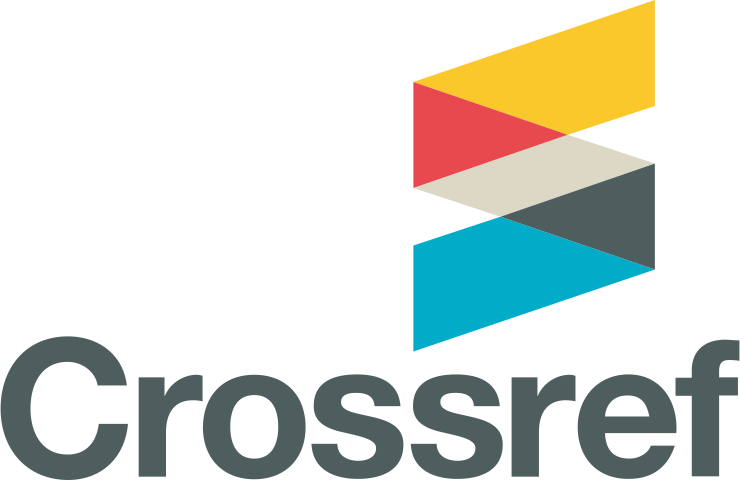Klasifikasi Sinyal EEG pada Sistem BCI Pergerakan Jari Manusia Menggunakan Convolutional Neural Network
DOI:
https://doi.org/10.33633/tc.v19i4.4119Keywords:
klasifikasi, EEG, motor imagery, lima jari manusia, 1D-CNNAbstract
Pemanfaatan sistem Brain-Computer Interface (BCI) sebagai penghubung pikiran manusia dengan peralatan eksternal sangat bergantung pada keakuratan pengklasifikasian dan pengidentifikasian sinyal EEG khususnya gerak motor imagery. Kesuksesan deep learning, sebagai contoh Convolutional Neural Network (CNN), dalam proses klasifikasi pada berbagai bidang berpeluang untuk diimplementasikan pada klasifikasi gerak motor imagery. Pengimplementasian CNN untuk klasifikasi sinyal EEG motor imagery (MI-EEG) gerakan jari tangan diperkenalkan dalam tulisan ini. Rancangan sistem klasifikasi terdiri dari dua bagian yaitu convolution layer dan multilayer perceptron yang diimplementasikan menggunakan Python 3.7 dengan library TensorFlow 2.0 (Keras). Pengujian rancangan sistem dilakukan terhadap lima subjek dari data MI-EEG 5F dengan frekuensi pencuplikan 200 Hz. Pengujian melibatkan Kfold-cross validation dan analisis pada confusion matrix. Berdasarkan hasil pengujian, peningkatan ukuran kernel menghasilkan peningkatan rata-rata akurasi sistem. Sistem dengan akurasi terbaik diperoleh pada rancangan dengan jumlah kernel 50 sebesar 51,711%. Rancangan sistem menghasilkan kinerja yang melebihi hasil penelitian yang menjadi rujukan utama.References
T. Triwiyanto, I. P. A. Pawana, and M. H. Purnomo, “An Improved Performance of Deep Learning Based on Convolution Neural Network to Classify the Hand Motion by Evaluating Hyper Parameter,” IEEE Trans. Neural Syst. Rehabil. Eng., vol. 28, no. 7, pp. 1678–1688, Jul. 2020.
D. B. MacDonald, “Electroencephalography: Basic Principles and Applications,” in International Encyclopedia of the Social & Behavioral Sciences (Second Edition), Second Edi., J. D. Wright, Ed. Oxford: Elsevier, 2015, pp. 353–363.
Irwanto, E. R. Kasim, A. Fransiska, M. Lusli, and O. Siradj, Analisis situasi penyandang disabilitas di Indonesia: sebuah desk-review. Depok: PUSAT KAJIAN DISABILITAS FAKULTAS ILMU-ILMU SOSIAL DAN POLITI, UNIVERSITAS INDONESIA, 2010.
K. Anam, S. Bukhori, F. S. Hanggara, and M. Pratama, “Subject-independent Classification on Brain-Computer Interface using Autonomous Deep Learning for finger movement recognition,” in 2020 42nd Annual International Conference of the IEEE Engineering in Medicine Biology Society (EMBC), 2020, pp. 447–450.
R. Langner, S. Leiberg, F. Hoffstaedter, and S. B. Eickhoff, “Towards a human self-regulation system: Common and distinct neural signatures of emotional and behavioural control,” Neurosci. Biobehav. Rev., vol. 90, pp. 400–410, 2018.
H. Chang and J. Yang, “Automated Selection of a Channel Subset Based on the Genetic Algorithm in a Motor Imagery Brain-Computer Interface System,” IEEE Access, vol. 7, pp. 154180–154191, 2019.
R. Chaudhari and H. J. Galiyawala, “A Review on Motor Imagery Signal Classification for BCI,” Signal Process. An Int. J., vol. 11, no. 2, pp. 16–34, 2017.
Y. Mishchenko, M. Kaya, E. Ozbay, and H. Yanar, “Developing a Three- to Six-State EEG-Based Brain–Computer Interface for a Virtual Robotic Manipulator Control,” IEEE Trans. Biomed. Eng., vol. 66, no. 4, pp. 977–987, Apr. 2019.
M. Kaya, M. K. Binli, E. Ozbay, H. Yanar, and Y. Mishchenko, “A large electroencephalographic motor imagery dataset for electroencephalographic brain computer interfaces,” Sci. Data, vol. 5, p. 180211, Oct. 2018.
K. Liao, R. Xiao, J. Gonzalez, and L. Ding, “Decoding Individual Finger Movements from One Hand Using Human EEG Signals,” PLoS One, vol. 9, no. 1, pp. 1–12, 2014.
R. Xiao and L. Ding, “Evaluation of EEG Features in Decoding Individual Finger Movements from One Hand,” Comput. Math. Methods Med., vol. 2013, pp. 1–10, 2013.
S.-H. Feng, J.-Y. Xu, and H.-B. Shen, “Chapter Seven - Artificial intelligence in bioinformatics: Automated methodology development for protein residue contact map prediction,” in Biomedical Information Technology (Second Edition), Second Edi., D. D. Feng, Ed. Academic Press, 2020, pp. 217–237.
Y. Wang, Y. Li, Y. Song, and X. Rong, “The Influence of the Activation Function in a Convolution Neural Network Model of Facial Expression Recognition,” Appl. Sci., vol. 10, no. 5, 2020.
D. P. Kingma and J. Ba, “Adam: Method for Stochastic Optimization,” in 3rd International Conference on Learning Representations, {ICLR} 2015, San Diego, CA, USA, May 7-9, 2015, Conference Track Proceedings, 2015.
Y. Chen, H. Chang, J. Meng, and D. Zhang, “Ensemble Neural Networks (ENN): A gradient-free stochastic method,” Neural Networks, vol. 110, pp. 170–185, 2019.
Q. Wu and P. Vos, “Chapter 6 - Inference and Prediction,” in Computational Analysis and Understanding of Natural Languages: Principles, Methods and Applications, vol. 38, V. N. Gudivada and C. R. Rao, Eds. Elsevier, 2018, pp. 111–172.
F. Chollet and others, “Keras,” 2015. [Online]. Available: https://keras.io.
Downloads
Published
Issue
Section
License
Copyright (c) 2020 Rahmat Widadi

This work is licensed under a Creative Commons Attribution-NonCommercial 4.0 International License.
License Terms
All articles published in Techno.COM Journal are licensed under the Creative Commons Attribution-NonCommercial 4.0 International (CC BY-NC 4.0). This means:
1. Attribution
Readers and users are free to:
-
Share – Copy and redistribute the material in any medium or format.
-
Adapt – Remix, transform, and build upon the material.
As long as proper credit is given to the original work by citing the author(s) and the journal.
2. Non-Commercial Use
-
The material cannot be used for commercial purposes.
-
Commercial use includes selling the content, using it in commercial advertising, or integrating it into products/services for profit.
3. Rights of Authors
-
Authors retain copyright and grant Techno.COM Journal the right to publish the article.
-
Authors can distribute their work (e.g., in institutional repositories or personal websites) with proper acknowledgment of the journal.
4. No Additional Restrictions
-
The journal cannot apply legal terms or technological measures that restrict others from using the material in ways allowed by the license.
5. Disclaimer
-
The journal is not responsible for how the published content is used by third parties.
-
The opinions expressed in the articles are solely those of the authors.
For more details, visit the Creative Commons License Page:
? https://creativecommons.org/licenses/by-nc/4.0/












